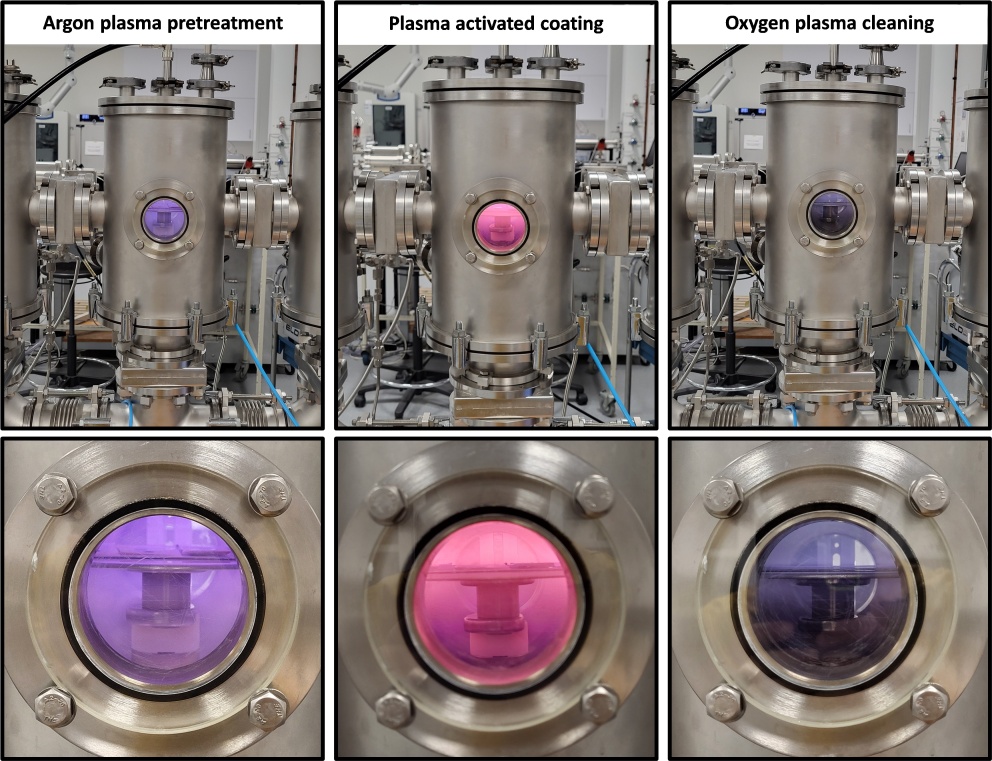Plasma-activated coating of biosensors

Collaborating with Professor Bilek's team at the University of Sydney, a novel surface engineering technique called plasma-activated coating (PAC) was adopted for biosensor fabrication.
In this picture, the glowing chambers represent the artificially produced plasma using inductively coupled radio frequency. Plasma, the fourth state of matter, consists of ionized gases, as observed naturally in thunderstorms and northern lights. Initially, carbon electrodes undergo Argon plasma treatment to eliminate surface contaminants. Then a plasma mixture of acetylene, nitrogen, and argon gases, creates a radical-rich coating layer that allows biomolecules to directly attach to the sensor surface, eliminating the need for expensive or toxic chemical linkers. Following sample removal, oxygen plasma cleanses the chamber of residual films formed during the PAC step.
This process offers a streamlined solution, eliminating complex chemical linkers and multi-step reactions typically required to attach capture biomolecules to an electrode. Through energetic ion bombardment, radical-rich surfaces, are suitable for robust covalent immobilization of capture biomolecules such as antibodies, enzymes, and aptamers. This one-step functionalization enhances reproducibility while minimizing concerns regarding degradation and chemical waste.